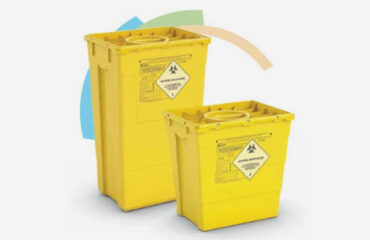Some Known Details About Reclaim Waste
Table of ContentsThe Of Reclaim WasteGetting The Reclaim Waste To WorkNot known Facts About Reclaim WasteHow Reclaim Waste can Save You Time, Stress, and Money.Little Known Facts About Reclaim Waste.
Check out the types, incidents, and kinds of fluid waste. Residential sewage waste describes the waste and items from a domestic septic system. This kind of waste is created by humans in residences, schools, and various other buildings. This only includes septic containers that have a drainpipe area. The correct management and disposal of residential sewage waste require fluid waste to be transferred to a sewage treatment plant where the correct methods and equipment are related to purify and get rid of waste.
Commercial waste usually includes potential dangers, such as combustible materials or a combination of liquid and strong waste items, and needs an advanced and detailed disposal procedure. The disposal of commercial waste typically involves the purification of waste prior to transport to make certain safe and appropriate disposal. Hazardous waste is produced from results and drainage of industrial processes and manufacturing.
This type of waste can not make use of the same sewage management transport or procedures as septic or commercial fluids. The industrial waste monitoring process requires the examination and testing of liquid waste before it goes through the disposal procedure (liquid waste removal). Drainage waste is the fluid waste that comes from runoff and excess stormwater in highly populated locations or cities
Drainage waste can create contamination and flooding if not managed properly. Discover more regarding drain cleaning and waste administration. Ensuring correct waste monitoring can prevent disasters and reduce ecological damage. Both people in property setups and professionals in commercial or manufacturing industries can gain from understanding the processes and policies of liquid waste monitoring.
Reclaim Waste Fundamentals Explained
Get in touch with PROS Services today to discover our waste administration and disposal solutions and the correct methods to look after the liquid waste you create.
Do you recognize what happens to your water when you disengage, purge the toilet or drain the washing equipment? No? Well, it's worth understanding. This so-called 'wastewater' is not just an essential source yet, after treatment, will certainly be released to our land, rivers or the ocean. Used water from bathrooms, showers, baths, kitchen area sinks, laundries and industrial processes is referred to as wastewater.

water made use of to cool equipment or clean plant and devices). Stormwater, a type of wastewater, is runoff that streams from farming and urban areas such as roofs, parks, gardens, roads, paths and rain gutters right into stormwater drains, after rainfall. Stormwater flows unattended directly to neighborhood creeks or rivers, eventually getting to the sea.
The Definitive Guide to Reclaim Waste
In Queensland, most wastewater is treated at sewer therapy plants. Wastewater is transferred from domestic or industrial sites through a system of sewers and pump stations, referred to as sewage reticulation, to a sewer therapy plant. Regional governments develop, preserve and operate most sewer treatment plants. Operators are certified under the Environmental Defense Act 1994 to discharge treated wastewater at an appropriate ecological criterion right into waterways.
The Division of Natural Resources suggests city governments concerning managing, operating and keeping sewerage systems and therapy plants. In unsewered locations, regional governments may call for homeowners to set up specific or house sewage treatment systems to treat residential wastewater from commodes, kitchen areas, bathrooms and washings. The Department of Natural Resources authorises using household systems when they are confirmed to be efficient.
Many stormwater receives no therapy. In some new class, treatment of some stormwater to get rid of litter, sand and gravel has actually begun utilizing gross contaminant traps. Wastewater therapy takes place in 4 stages: Gets rid of solid matter. Bigger solids, such as plastics and other things wrongly released to sewers, are gotten rid of when wastewater is gone through screens.
Uses tiny living organisms understands as micro-organisms to damage down and eliminate continuing to be liquified wastes and fine fragments. Micro-organisms and wastes are incorporated in the sludge.
Our Reclaim Waste Ideas
Nutrient removal is not available at all sewer therapy plants due to the fact that it requires costly specialist devices. It is becoming much more usual in Queensland. Clear liquid effluent generated after treatment might still consist of disease-causing micro-organisms. If this important site effluent is launched into rivers such as rivers or the sea, the micro-organisms will ultimately die out.

This generally means wastewater has actually to be dealt with or pollutants gotten rid of before it can be discharged to rivers. A lot of wastewater streams into the sewage system. Under the Act, city governments provide approvals and permits for eco appropriate activities (Ages) involving wastewater releases that might have a regional influence. The division provides approvals and permits to Periods involving wastewater launches that may have a regional or statewide influence.
Examine This Report about Reclaim Waste
Monitoring provides accurate details concerning water top quality and can validate that licence conditions are being satisfied. The information acquired via surveillance provides the basis for making water top quality decisions.
Comments on “A Biased View of Reclaim Waste”